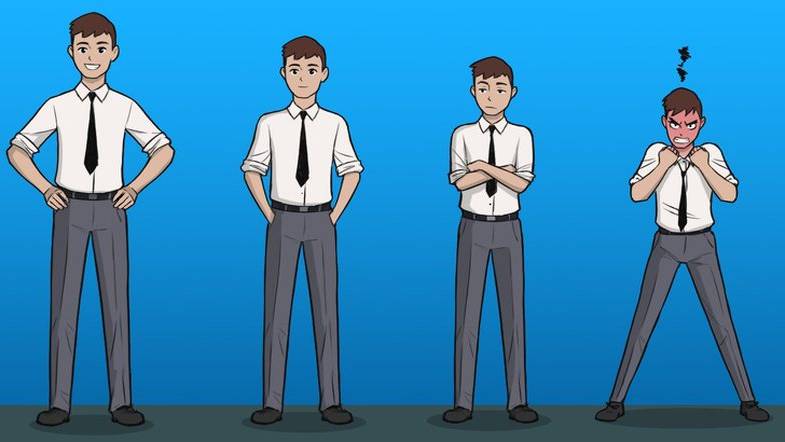~Jenefa Sweetlyn John
If you think you can do a thing or think you can’t do a thing, you are right.
Henry Ford
Table of Contents
What is the Pygmalion effect?
The Pygmalion effect is a self-fulfilling psychological phenomenon. It changes the person’s beliefs towards themselves by strengthening their original belief. The Pygmalion effect works on a person with the help of another person.
It is basically how a person can influence the performance of another person. The performance is based on the input given by the influencer. If the input is positive, the result is a positive performance. The effect centres on a positive attitude and action.
The story of Pygmalion Effect
The Pygmalion effect traces its name from the Greek mythological sculptor Pygmalion. This mythological story is told by Ovid in his Metamorphoses : Book X.
Pygmalion created a statue and adored it a lot. His admiration turned to love. Thus he pleaded to Aphrodite, the goddess of love to give life to his statue. As the story goes, the statue comes to life and Pygmalion marries her. Thus Pygmalion’s expectations come true.
Pygmalion and Other Effects
• The Pygmalion effect is also known as the Rosenthal effect. This effect is named after the psychologist Robert Rosenthal. It is the same as the Pygmalion effect but it tells especially about how the researchers’ belief of a particular outcome in a research is likely to become the outcome of the research.
• The Golem Effect and the Pygmalion Effect are contrary to each other. The Golem Effect focuses on the negative input and negative output whereas the Pygmalion effect focuses on positive performance.
• The Galatea effect is often confused with the Pygmalion effect. Galatea effect shares the same concept of the Pygmalion effect but the only difference is that the influencer is the individual. The presence of an external influence is absent.
For example, an employee performs well in his work because his motive is to perform well and become successful in his field. The same example under the Pygmalion effect stresses the employer’s expectation of the employee to perform well.
• Another confusing effect is the Halo effect. The Halo effect is a cognitive bias in which a particular trait of a person becomes the signifier of every trait of the person.
For example, if you are good at mathematics, then according to the halo effect you will be good at physics. Thus one characteristic becomes the total representation of an individual.

Pygmalion Effect in Psychology
As said earlier, the Pygmalion effect is a self-fulfilling psychological phenomenon. The term self-fulfilling was introduced by Robert Merton. He defines self-fulfilling as
“A false definition of a situation evoking a new behaviour which makes the originally false conception come true” – (Merton, 1968, p. 477)
Is it possible to expect anything and make it happen?
The Pygmalion effect is not magical. What happens is that the energy we receive (positive/negative) increases our previous abilities. Or let us just say that it acts as a motivation for us to improve ourselves. The Pygmalion effect undergoes three processes:
1. We form expectations of others and communicate it either verbally or non- verbally.
2. The others reflect our expectations which act as a signal to our expectations.
3. Then we self monitor ourselves and change our actions satisfying our expectations. Thus this effect is a self-fulfilling process.
Pygmalion Effect in Education
The Pygmalion effect in education is better understood by the study of Robert Rosenthal and Lenore Jacobson. They published a book called “Pygmalion in the Classroom” in 1986 which details the experiments carried out by them to prove the Pygmalion effect in the classroom.
A teacher’s high expectations towards an ordinary student make thestudent score more in the exam. The teacher’s motives towards the students should alter as most of the time teachers categorize students as good and weak.
They are attending only the good students with high expectations while ignoring the rest. Whether it is positive or negative what they give is reflected in the student’s performance. If that is the case, teachers should consider their pressing role and pay attention to every student.
Pygmalion Effect in Literature
In literature, George Bernard Shaw and W.S Gilbert wrote plays based on the mythological story of Pygmalion. They are ‘Pygmalion’ and ‘Pygmalion and Galatea’ respectively.
‘Pygmalion’ deals with Eliza Doolittle, a flower girl speaking the local dialect. Higgins a phonetics professor bets with his friend that he will change Eliza into a duchess (a lady of elite social life) by changing her dialect. On hearing this, Eliza gets motivated and joins professor Higgins in his bet.
“Pygmalion and Galatea”, by W.S Gilbert portray the story of the Greek mythological character Pygmalion, a sculptor. In this play, Pygmalion is married.
He craves sculptures in the resemblance of his wife. One of those sculptures is Galatea. In this play, Galatea falls in love with Pygmalion.
Pygmalion Effect in Workplace
The Pygmalion effect is the best way to reach leadership qualities. It improves our positive qualities and confidence through feedback.
In the workplace, this effect plays an effective role. It brings out the full potential of the employees and increases productivity. Nevertheless, if the communication between the employer and the employee goes wrong it leads to complete destruction of their goals.

How to Stop the Pygmalion effect?
Why try to stop this magical effect? If the effect is not so fulfilling don’t stop it instead of trying to change the direction of the effect. And the best way to do it starts from
1. Tracking our behaviour.
2. Not getting manipulated by other’s expectations.
3. Choosing your goal for good and working on it.
4. Not giving up.
Optimism Bias in the Pygmalion Effect
Optimism bias is also known as a personal fable. It is a state in which the person stays away from reality and fails to accept misfortunes in life. Optimism bias makes the individual stay in a delusional fairyland where everything happens positively against reality.
For the Pygmalion effect to function properly, optimism bias must be overcome. We must face reality with confidence. Pygmalion effect is the power of our belief and the confidence in our belief is essential to move towards our goal.
Conclusion
“If you expect your battle to be unsurmountable, you have met the enemy. It’s you”.
Khang Kijarro Nguyen
Thus, the Pygmalion effect is the power of our belief better identified through another person. If used consciously with involvement it benefits abundantly. We have to learn to trick our memory and mind to channel the best outcome of this effect.










Leave a Reply